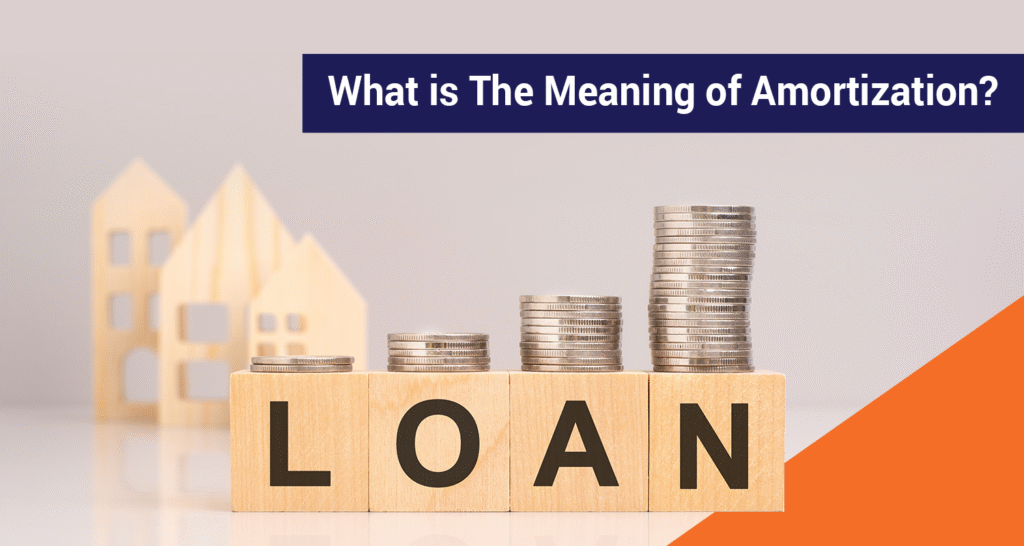Loan balance refers to the outstanding amount of money that a borrower still owes to the lender at any given point in time. It represents the portion of the original loan principal that has not yet been repaid, including any accrued interest and fees that have not been paid off.
When you first take out a loan, your loan balance is equal to the full amount you borrowed (the principal). Over time, as you make payments, your loan balance decreases. Each payment you make is usually split between paying off some of the principal and covering the interest charged by the lender.
Key Takeaways
- Extra payments reduce principal balance, saving interest.
- Even small extra payments can significantly shorten loan term.
- Always check for prepayment penalties or restrictions.
- Use extra payments strategically based on your financial goals.
- Consistency is key—automate or schedule extra payments.
- Make sure extra payments apply directly to principal.
- Balancing extra payments with emergency savings and investments is crucial.
Understanding Loan Structure: Principal and Interest
Before delving into extra payments, it’s important to understand how loans are structured. Every loan consists of two components:
Absolutely! Here’s an expanded and detailed explanation of Principal and Interest to deepen the content for your article:
Principal: The Original Amount You Borrow
The principal is the initial sum of money that a borrower receives from a lender when taking out a loan. It represents the actual amount you are borrowing to fund a purchase or financial need, such as buying a home, a car, or paying for education.
- Core of the Loan: The principal is the core component of the loan and does not include any interest or fees.
- Repayment Focus: Every payment you make reduces the principal, either partially or fully over time.
- Starting Point: Your loan balance begins with the principal amount, and the goal is to gradually pay it down until it reaches zero.
- Effect of Extra Payments: When you make extra payments, they typically go directly toward reducing the principal, accelerating your debt payoff.
Example: If you take out a loan of $20,000, your principal is $20,000. Over time, your payments chip away at this amount.
Interest: The Cost of Borrowing

Interest is essentially the fee you pay for borrowing money. It is expressed as a percentage rate applied to the outstanding loan balance (principal) over time.
- How Interest is Calculated: Interest is calculated on the remaining principal balance, so the amount of interest you pay decreases as the principal is paid down.
- Types of Interest Rates: Interest rates can be fixed (remain constant over the loan term) or variable (change based on market conditions).
- Accrued Over Time: Interest accrues daily or monthly, depending on the loan agreement, and forms part of your regular loan payment.
- Interest vs. Principal Payments: Early in a loan’s life, a larger portion of your monthly payment goes toward interest, with the remainder reducing the principal. As the loan matures, more of each payment reduces the principal.
- Total Cost: The total interest paid over the life of the loan can sometimes be equal to or even exceed the original principal, especially on long-term loans.
Example: On a $20,000 loan with an interest rate of 5% per year, you pay 5% of the remaining principal as interest annually. If the principal is $20,000 at the start, the interest for the first year is approximately $1,000.
Relationship Between Principal and Interest
The principal and interest are intertwined throughout your loan term:
- Interest depends on Principal: Since interest is calculated as a percentage of the principal, reducing the principal reduces the interest charged.
- Loan Payments Split: Each payment you make splits into two parts—one toward interest and one toward principal reduction.
- Impact of Extra Payments: Making extra payments lowers the principal quicker, which lowers future interest payments, saving you money over time.
Why Understanding Principal and Interest Matters
Knowing how principal and interest work helps borrowers:
- Plan Payments Strategically: Focus on reducing principal to minimize interest.
- Understand Loan Amortization: Recognize why early payments mostly cover interest.
- Make Informed Decisions: Decide whether to make extra payments or invest funds elsewhere.
- Estimate True Cost of Loan: Calculate total interest paid over the loan term.
When you make a loan payment, part of your payment goes toward reducing the principal, and the rest covers the interest.
How Loans Are Amortized

Most loans, like mortgages or auto loans, are amortized, meaning the repayment is split into equal monthly installments over the loan term. Early payments mostly cover interest, and over time, the principal portion of each payment increases. This means the longer you take to pay off the loan, the more interest you pay overall.
What Are Extra Payments?
Extra payments are any payments made beyond your required monthly loan payment. These can be:
- Additional lump sum payments
- Increased monthly payments
- Bi-weekly payments (making half a payment every two weeks)
Types of Extra Payments
Lump Sum Payment
Definition:
A lump sum payment is a one-time large payment made toward your loan principal. This could be from a tax refund, bonus, inheritance, or any unexpected windfall.
How It Works:
Instead of making just the required monthly payments, you pay an additional amount in one go, directly reducing the principal balance.
Benefits:
- Significant Interest Savings: Because the principal drops suddenly, the interest charged on future payments decreases sharply.
- Shortens Loan Term: A large principal reduction speeds up the payoff timeline, potentially saving years on your loan.
- Flexibility: You choose when to make the lump sum, often when you have extra funds available.
Considerations:
- Check Loan Terms: Some loans have restrictions or penalties on large early payments (prepayment penalties).
- Timing Matters: The earlier you make the lump sum payment in the loan term, the greater the interest savings.
- Financial Planning: Ensure that making a lump sum payment doesn’t deplete your emergency savings or other important funds.
Example:
If you receive a $5,000 tax refund and put it toward your mortgage principal, your loan balance instantly drops by $5,000, which decreases future interest payments and shortens the loan length.
Increased Monthly Payments
Definition:
This involves paying more than your scheduled minimum monthly payment consistently over the loan term.
How It Works:
Each month, you add extra money to your usual payment amount. For instance, if your monthly mortgage payment is $1,200, you might pay $1,400 instead.
Benefits:
- Steady Reduction of Principal: Regular extra payments chip away at the principal faster.
- Simpler to Budget: Since payments happen monthly, it’s easier to incorporate into your regular budget.
- Improves Loan Equity: If it’s a mortgage, your home equity grows quicker, which can be helpful if you plan to refinance or sell.
- Reduces Interest Over Time: Less principal means less interest accrued, saving you money overall.
Considerations:
- Sustainability: Can you consistently afford the higher payment over the loan’s lifetime?
- Loan Application: Confirm with the lender that the extra money goes toward principal and not just future payments.
- Budget Impact: Make sure increasing payments does not strain your monthly finances.
Example:
Paying an extra $100 monthly on a 30-year $200,000 mortgage at 4% interest can reduce the loan payoff by several years and save tens of thousands in interest.
Bi-Weekly Payments
Definition:
Bi-weekly payments split your monthly payment in half and pay that half every two weeks, rather than once a month.
How It Works:
There are 52 weeks in a year, so making a half payment every two weeks results in 26 half payments or 13 full payments annually — effectively making one extra payment per year.
Benefits:
- Accelerated Principal Reduction: That extra payment every year shortens your loan term.
- Interest Savings: Faster principal reduction means less interest paid over the life of the loan.
- Budget-Friendly: Smaller, more frequent payments can be easier to manage than one large payment.
- Automatic Savings: If automated, it encourages consistent extra payments without needing extra discipline.
Considerations:
- Lender Acceptance: Not all lenders allow bi-weekly payments or may charge fees for processing them.
- Payment Processing: Ensure payments are applied immediately to principal, not just held for the next scheduled payment.
- Cash Flow Impact: Payments come more frequently, which could affect your budgeting.
Example:
On a $250,000 mortgage at 4.5% for 30 years, switching to bi-weekly payments can shave 4 to 6 years off the loan term and save thousands in interest.
Would you like me to include sample amortization schedules showing how each method affects loan payoff, or detailed math behind these payment strategies?
How Extra Payments Affect Loan Balance

When you make an extra payment, the amount typically applies directly to the principal (depending on your lender’s policy). This immediate reduction in principal decreases the total loan balance. This has several cascading effects:
- Reduces future interest charges because interest is calculated on the remaining principal.
- Allows more of your subsequent payments to go toward the principal.
- Shortens the loan term.
Impact of Extra Payments on Interest
Since interest accrues based on the principal, reducing the principal early results in significant interest savings over the loan life. Even a small extra payment early in the loan term can save thousands of dollars in interest.
How Extra Payments Shorten Loan Ter
Because extra payments reduce the principal faster, you pay off the loan sooner than scheduled. For example, making one extra monthly payment per year can cut a 30-year mortgage down by several years.
Benefits of Making Extra Payment
- Interest savings
- Faster loan payoff
- Build equity quicker (in mortgages)
- Improve credit score by lowering debt-to-income ratio
- Financial freedom and less monthly stress
Potential Risks and Consideration
- Prepayment penalties: Some lenders charge fees for paying off loans early.
- Opportunity cost: Money used for extra payments might be invested elsewhere for higher returns.
- Emergency fund: Don’t compromise your emergency savings to pay extra.
- Loan terms: Confirm how extra payments are applied (some go toward future payments, not principal).
Strategies for Making Extra Payments
- Make bi-weekly payments instead of monthly.
- Use windfalls like bonuses or tax refunds for lump sum payments.
- Increase your monthly payment amount by a small percentage.
- Round up payments to the nearest hundred dollars.
- Automate extra payments to stay consistent.
Case Studies and Example
Example 1: $200,000 mortgage at 4% interest, 30 years
- No extra payment: Total interest paid ~$143,739
- Extra $100/month: Loan paid off 5 years early, interest saved ~$22,000
- One-time $5,000 lump sum after year 1: Interest saved ~$10,000
Example 2: Auto loan $25,000 at 6%, 5 years
- No extra payment: Total interest ~$4,000
- Extra $50/month: Loan paid off 8 months early, interest saved ~$350
Common Misconceptions about Extra Payments
- “It doesn’t make a difference.” – Even small extra payments can save significant interest.
- “I’ll just save the money instead.” – While savings are important, high-interest loans Cost more than typical savings interest.
- “I can’t make extra payments anytime.” – Most loans allow extra payments but always check terms.
- “Extra payments reset the loan.” – Extra payments reduce principal and don’t restart amortization schedules.
Also Read: Why Is My Loan Approval Delayed And What Steps Should I Take Next?
Conclusion
Making extra payments on your loan can be a powerful tool to reduce your overall debt faster, save substantial interest costs, and achieve financial freedom sooner. While it’s important to consider your loan terms and financial situation, the benefits of extra payments typically outweigh the downsides.
By understanding how extra payments affect your loan balance, interest, and amortization, you can take control of your debt and work toward a brighter financial future.
FAQs
Can I make extra payments on any loan?
Most loans allow extra payments, but confirm with your lender about penalties or restrictions.
2. Do extra payments go toward principal or future payments?
Typically, extra payments apply to the principal, reducing loan balance, but verify with your lender.
3. How much extra should I pay?
Even small extra amounts help. Aim for what fits your budget without compromising essentials.
4. Will extra payments affect my credit score?
Reducing your loan balance and paying on time can improve your credit score over time.
5. Are there any penalties for early repayment?
Some loans have prepayment penalties. Always check your loan agreement.
6. Can I make lump sum payments anytime?
Usually yes, but confirm lender policies.
7. How do extra payments impact my monthly payment?
Your monthly payment remains the same, but loan duration shortens, and interest paid decreases.



